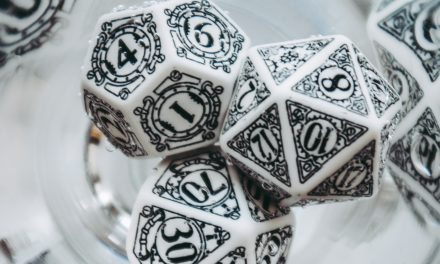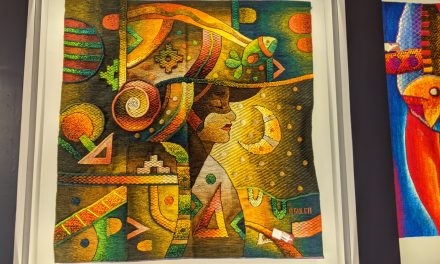by David Rollick
“1941. Right now, not very far from here, the German war machine is rolling up the map of Europe. Country after country, falling like dominoes. Nothing can stop it. Nothing, until one tiny, damp little island says “No. No, not here.” A mouse in front of a lion. You’re amazing, the lot of you.” – “The Empty Child,” Doctor Who
While Christopher Eccleston’s rendition of the Doctor is fictional, the awe he expresses toward the people of London for their steadfast survival during the Blitz is no less real than the sentiment expressed by the observers of the actual event. Eccleston’s character exalts the Londoners for their dogged perseverance in the face of hardship against the monolith German war effort, echoing Churchill’s famous exclamation “we will defend our island.” The Blitz has been reproduced in different forms of media across time, but none effectively depict the bleak reality of the blackouts imposed to protect London from the German bombers. However, the modern reader can utilize a New Historicist theoretical approach to develop a sense of the immense civilian strife caused by the oppressive blackouts through the stories of H. D’s collection, Within the Walls. H.D. pens her story “Blue Lights” from the wreckage of war-torn London, crafting a literary artifact that provides the reader with a window into her mind. It stands with all the veracity of a historical text that incites resonance and wonder, which allows it to echo across time in surprising ways that enable the modern reader to feel the specter of the war at their backs and cement the importance of H.D.’s work as a narrative of war on the civilian front.
At this point in time, modern society is 76 years removed from the end of the Second World War, placing it further from the war than the war to the invention of the telephone, but specters of the war continue to hang over society even today. Just this past January Dr Vin Diwakar, the NHS England regional medical director for London, said that people breaking COVID-19 lockdown rules was the equivalent of “switching on a light in the middle of the blackout in the Blitz,” further linking the present with the past in stressing that the pandemic is the single greatest health emergency the country has faced since the Second World War (Fisher). While COVID lockdown precautions are nowhere near the level of the blackout during the Blitz, the comparison likely unnerved the British people all the same. This connection penetrating across time is one form of Stephen Greenblatt’s idea of resonance and can be further applied to H.D.’s short stories.
Under the umbrella of the humanities, history and literature have always been intricately linked but never more so than after Stephen Greenblatt coined his term “New Historicism,” which bound the two together through the idea of literary history. In his essay “Resonance and Wonder,” Greenblatt defines New Historicism as “an interest…in the embeddedness of cultural objects in the contingencies of history” (2032) citing the example of Cardinal Wolsey’s cap as an example of a historical artifact that allows the reader to better understand history through the context of literature and the power it has “to stop the viewer in his tracks” (2038). The new historicist theoretical lens is interested in people making choices in contingent and specific existential situations. Greenblatt writes that people are conditioned by the variable expectations of their identities, including class, gender, religion, and race, and these same aspects of existence within society yield an agency that allows them to effect change throughout the course of history. For Greenblatt, agency takes myriad forms: “even inaction or extreme marginality is understood to possess meaning and therefore to imply intention. Every form of behavior, in this view, is a strategy: taking up arms or taking flight is a significant social action, but so is staying put, minding one’s business, turning one’s face to the wall. Agency is virtually inescapable” (2032). New historicism explores the area where textual wholeness and resolution break down. The new critics operated under an assumption that successful artworks “were triumphs of resolution, that they were, in Bakhtin’s term, monological—the mature expression of a single artistic intention” and in contrast, new historicists study unresolved conflict and seek “a stubborn, unassimilable otherness, a sense of distance and difference,” that occurs in texts (Greenblatt 2036-2037). By examining expression at the boundary of cultural understanding, such as dreams, as ways of “coming to terms with the period’s methods of regulating the body, its conscious and unconscious psychic strategies, … its mechanisms for the display of power and the expression of discontent…” new historicism provides a lens through which we can analyze literature for the sense of resonance it elicits (Greenblatt 2037). H.D.’s short story “Blue Lights” is ripe with the abstract expression of distance and difference, and those same expressions enable the story to take its place as a literary artifact that resonates across history.
In referring to H.D.’s work as a literary artifact, we attach connotations of the historical. In his essay “Historical Text as Literary Artifact” Hayden White argues that historians use the “historical imagination” when they depict the past and as such, rely on the same narrative strategies that a literary writer might (1464). Historiography and historical literature are qualitatively similar, in that historians use literary techniques as well as poetic devices to craft historiographies that are compelling, and White sees history as narrative prose that is produced at the nexus of literary conventions and the historian’s creativity (1479). Historians construct narratives based on series of events or biographical data, while fiction authors likewise rely on the same events and data to construct plots and encode facts in what White calls emplotment (1465-1466). By the process of “reemplotting” or recoding events of the past, historians recode past events so that modern society better understands the past (White 1469). Whether factual history or historical fiction, historical events are constructed into a story in interrelated and similar processes, and historiographies often share tones, styles, and themes with literature. Elucidating the link between literature and history enables history itself to be rewritten to incorporate contemporary values, which in turn leads to new questions and insights that guide research and the presentation of that history, leading to the creation of a new history, which in turn leads to a new understanding of the present. Applying this metahistorical lens to H.D.’s “Blue Lights” and viewing it as a literary artifact enables the work to stand as a war narrative no less historical than any historiography.
Before examining H.D.’s story, historical background is required to understand the all-encompassing nature of the blackouts across Europe. The strategic objective of the blackout was to obfuscate the navigation of the German bombers over the home front. Parliament legislated and enforced rules for achieving a total blackout, but their success depended on the cooperation of citizens. The impact of the blackout on civilian life was unlike previous disruptions to civilian life, as it was “comprehensive and immediate,” universal in affecting the populace, regardless of class, age, sex, race, or regional abode (Calder, 72). The blackout was responsible for a nearly 100% increase in deaths due to road accidents in 1939, not including those who “walked into canals, fell down steps, plunged through glass roofs and toppled from railway platforms” in the oppressive darkness (Calder 73). Furthermore, a January 1940 poll revealed that while there were no casualties due to enemy forces, “one person in five could claim to have sustained some injury as a result of the blackout” (Calder 73). The consequences of the blackouts did not stop at the realm of the physical, however.
The blackouts affected everyone in London in every aspect of their lives, forcing citizens to take unprecedented levels of preparedness. Calder writes that the average citizen had to “rush to the shops to buy blinds, curtains, blackout paint, cardboard, drawing pins, brown paper or whatever could be used” to darken and seal the windows at night (Calder 56). The city itself was utterly transformed by the blackout and, as Annette Debo’s introduction to Within the Walls and What Do I Love explains, it resulted in the development of phenomena unique to the Blitz, namely the blue lights used in place of common light bulbs (29). Debo writes that light itself was strictly regulated, and blue lights offered minimal light, enabling the city to disappear into the night (29). If even a single ray of light escaped the blackout curtains or a skylight missed by the tape, air raid wardens would not be far from the door (Calder 63). The blackouts forced many people to stay indoors for their safety, with the only means of diversion being a lengthy read or an early end to the night (Calder 63) and given Vera Brittain’s description of the blue lights as “not strong enough to enable me to distinguish the features in the pale ovals which are my neighbours’ faces,” it becomes easy to see which option won out most of the time (27). Taking this historical context into account, it becomes easier for the reader to see H.D.’s text as the literary artifact that it shows itself to be.
While there is extensive criticism on Trilogy and other poetry as examples of war writing, there is little established criticism on H.D.’s short stories. Sarah Graham writes that Trilogy is a direct response to World War II, with H.D. flagging the dates to situate the writing firmly in the center of the war experience, announcing to her audience that she is not just living through the war years, but doing so in London, as the Blitz rages around her (161). Graham reads Trilogy as war poetry not simply because it uses the Second World War to craft a response to the conflict and its consequences, but because it cannot escape the emotional, intellectual, and aesthetic heritage of the First World War and its paralyzing effect on the poet (204). However, this paper will not seek to view H.D.’s short story “Blue Lights” as a creation of the paralyzing effect of war, but instead of the unique generative effects the Blitz had for H.D.
“Blue Lights” is a story only two pages in length that offers no shortage of historical and literary narrative. H.D. begins her story saying, “I tangled myself in the cord of my reading-lamp, a major tragedy, last night…” and on the surface, one immediately questions how such a simple thing can be such a tragedy (119). Note that in the absence of her reading lamp, H.D. likely had no source of illumination apart from the titular blue lights, restricting her vision and therefore her ability to read and write. To an inventive mind where the war and blackouts were generative to the imagination, depriving an artist of their ability to put the material of the mind to productive use is nothing short of a tragedy. H.D. then mentions her water bottle leaking in the night, saying, “if two things break, three will” citing a “gypsy idea that if you yourself break the third, you will lay the spell – a match-stick will do,” implying a superstitious belief that if three things are destined to break, it is better to be the one to break the third oneself, rather than leave the situation to chance in the power of others (119). H.D. clearly believes that it is better to live amid known danger than to venture into the unknown. This is a creed that resonates across time with even the modern audience, like an artifact in Greenblatt’s theoretical museum would. Whether in the form of choosing to remain in an abusive relationship, transferring to a new job or school, or what happens to the being when the body dies, the fear of the unknown manifests itself as an intense anxiety not unlike what H.D. surely felt as she sequestered herself behind the walls of her home, waiting for the bombing to pass. H.D. explains to the reader that “the only real thing now, is the buzz-zz-zz of the enemy wings overhead. We miss them if they don’t come; stare at the ceiling and wonder, who is getting it now? If they rain fire and bombs on us, at least, they are here, we know where they are.” (119). By voicing these inner thoughts, H.D. provides a resonant window into her mind that proves no less factual than a curated historiography.
H.D. goes on to ponder human endurance and mortality (not unlike Eccleston’s doctor in the epigraph), assessing aspects of her own reality as she lives through the Blitz. Writing that “We can’t stand it any more. But we do stand it,” H.D. epitomizes the historical British attitude that “London can take it” as referenced in the wartime propaganda films (120). In this light, “standing it” becomes a profound act of agency. H.D. chooses to remain in London despite the hardships of the blackout. H.D. tells the reader “I do not want to go to Cornwall or to Eckington, for that matter. It unnerves me to make another move,” blending the anxiety toward the unknown with passive resistance. However, in this case, H.D. is not special; many Londoners chose to weather the Blitz and persist in London through the blackout. By staying put and expressing the nuances of her mind in print, H.D.’s work establishes a resonance only capable of existing at the nexus of creativity and war. Furthermore, “Blue Lights” offers a sense of the wonder that H.D. herself feels toward the events of the Blitz, directly addressing it in the latter half of her story.
In “Blue Lights,” H.D. undertakes an extensive logical spiral in which she contemplates her mortality, and the generative effect it has on her work. H.D. writes:
“When a man is dying, they say, his life flashes across; or if a man is dying, suffering, they say, sometimes he ceases to suffer and in the last agony, feels nothing. There is that. We reach the end, and if we can sustain sanity and detachment and discernment, we are each of us a Galileo, a Newton. We may make discoveries that the human mind has not yet, so far, been in a position to make, about the human mind. If we can be the doctor, alive, watching ourself dying, we may come across some amazingly important and staggering discoveries” (120).
The above quote is a line of thought that H.D. likely ruminated on extensively as she endured the darkness of the blackout. H.D. offers a direct look at the mind of a writer forced to endure hunger, darkness, fear, and myriad other detriments to the creative process, but it is not a mind given over to abject despair. H.D. likens the generative power the war holds for her as a blue flame that burns within the skull, comparing it to the flame of her blackout lantern (120). For H.D. blue light is “for extra occasions” or times when “the ordinary light of human reason, the usual human mind-voltage” simply is not enough (120). White and yellow light suffice when under the protection of her home, but whenever H.D. leaves the safety of the walls of her home, she must switch her metaphorical lantern slide to blue to properly process and utilize the generative power of the darkness. H.D. sees fellow “cerebral minds” amongst the ruins of London as her fellow blue flames in the night and feels cut off from them when hidden within the safety of her home. H.D. claims that her creative process is not writing, but “burning” as she inscribes whatever enters her mind upon the paper in front of her.
In this way, the generative nature of the war leads directly to H. D.’s writing as an act of survival. H.D. feels that her contacts in America who asks for manuscripts would not understand the burning nature of her writing, remarking that “this flame must meet another flame, other flames, as the electric-torch picks out, in the damp and dank and murk of our London streets at night” (120). H.D. expresses the importance of human perseverance to her fellow Londoners, seeing the darkness of the blackout as opportunity for the blue lights—or creative brilliance—and solidarity to shine through more than they would under more desirable conditions. H. D’s writing epitomizes the British attitude toward the Blitz by painting a historical narrative of the trials of the average Londoner who chose to weather the blitz. H.D. constantly thinks “of those blue lights, burning in skulls, burning out bodies that have become baffled with conditions of the simplest living” and finds hope where there would otherwise be none in the “immense adventure of going on where the human mind has not yet penetrated” (120). By the end of the story, the tone of the writing becomes almost excited at the idea of exploring the darkness illuminated only by the blue light of the lantern in hand, not only illustrating H.D.’s own sense of Greenblatt’s concept of “wonder,” but also the transhistorical nature of that same wonder to affect the reader in the contemporary age.
English writer George Orwell once said, “I never thought I should live to grow blasé about the sound of gunfire, but so I have,” and on the surface it offers a grim outlook on life during the Blitz. However, becoming accustomed to something is different from growing numb to it, and as H.D. has shown us, war can offer remarkable generative properties for one who can discipline the mind and harness the resultant energy. “Blue Lights” is not the typical example of a wartime historiography and plays more with dreamy thought processes than concrete details but is all the while no less real and valid. H.D.’s story resonates across time, evoking memories of the isolation and sacrifice many have felt in the early months of the global pandemic, like Cardinal Wolsey’s hat. While the text is not what we might consider an artifact in the museography sense, it evokes no less wonder in those who read it. The Blitz is a historical event and H.D.’s writing is the cultural artifact, and when viewed together through the lens of new historicism, it becomes easy to see the constant interplay between literature and history, each influencing how we read the other and the insights that can be gleaned.
Works Cited
Brittain, Vera. England’s Hour. Macmillan, 1941.
Calder, Angus. The People’s War: Britain 1939 – 1945. Pimlico, 1992.
Debo, Annette. Introduction to Within the Walls and What Do I Love. University Press of Florida, 2016, pp. 3-104.
Fisher, Lucy. “Medical Chief Compares Covid Rule-Breakers to People Who Turned on Lights in Blitz Blackouts.” Telegraph.co.uk, Jan 21, 2021. ProQuest, http://proxy195.nclive.org/login?url=https://www-proquest-com.proxy195.nclive.org/newspapers/medical-chief-compares-covid-rule-breakers-people/docview/2480380441/se-2?accountid=14968.
Graham, Sarah H.S. “‘We Have a Secret. We Are Alive’: H.D.’s Trilogy as a Response to War.” Texas Studies in Literature and Language, vol. 44, no. 2, University of Texas Press, 2002, pp. 161–210, http://www.jstor.org/stable/40755359.
Greenblatt, Stephen J. “From Resonance and Wonder.” Norton Anthology of Theory and Criticism, by Vincent B. Leitch, Norton & Company Limited, W.W., 2018, pp. 2029–2040.
H.D. Within the Walls and What Do I Love, edited by Annette Debo, University Press of Florida, 2016.
White, Hayden. “From The Historical Text as Literary Artifact.” Norton Anthology of Theory and Criticism, by Vincent B. Leitch, Norton & Company Limited, W.W., 2018, pp. 1463–1480.





